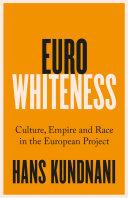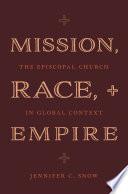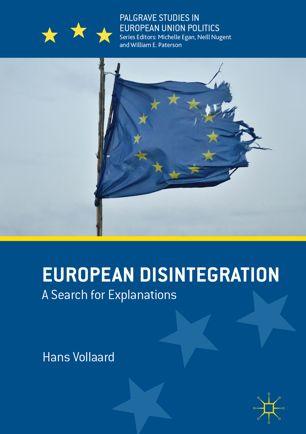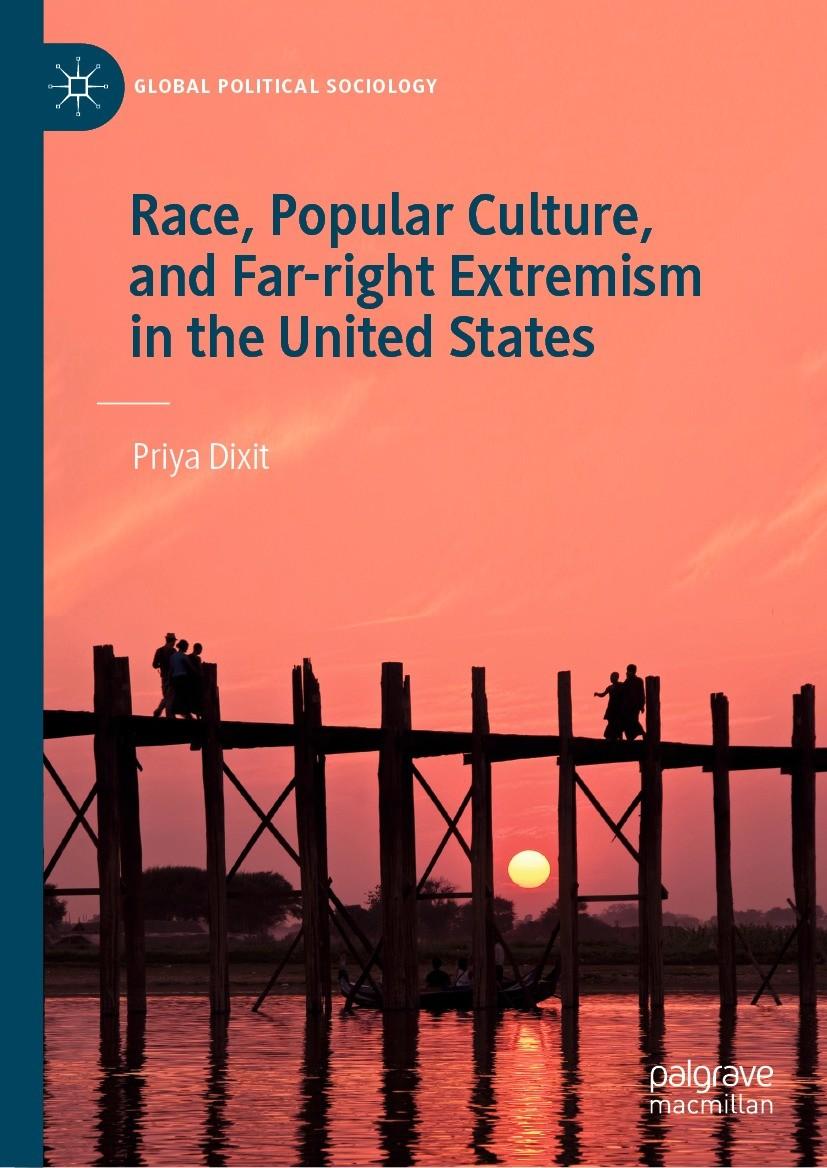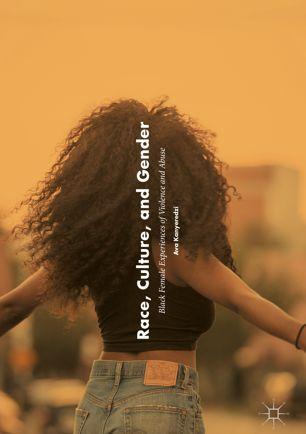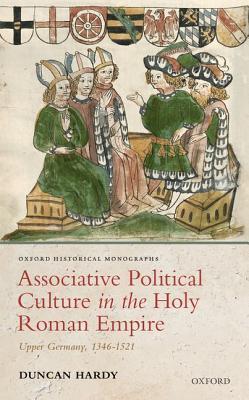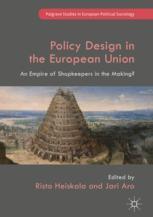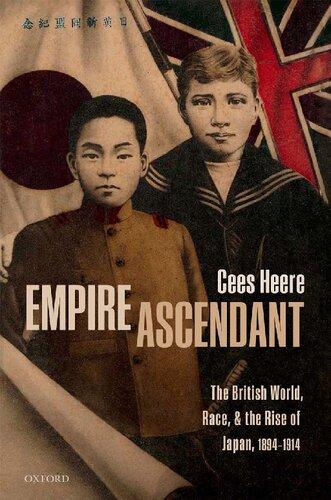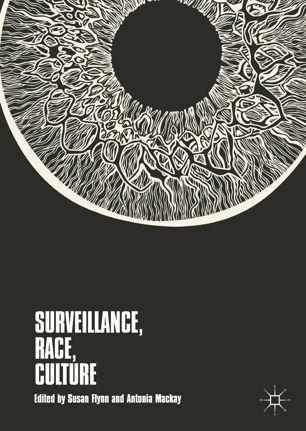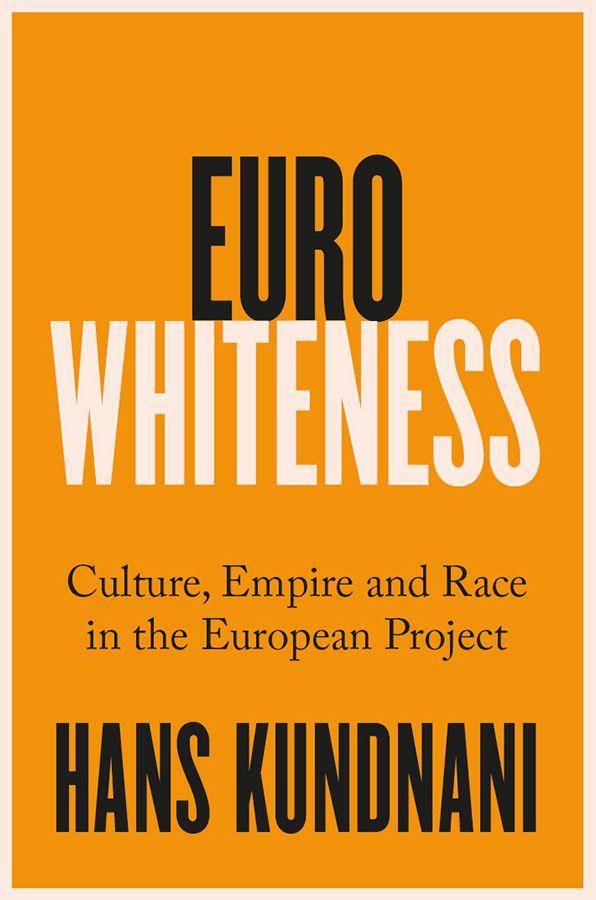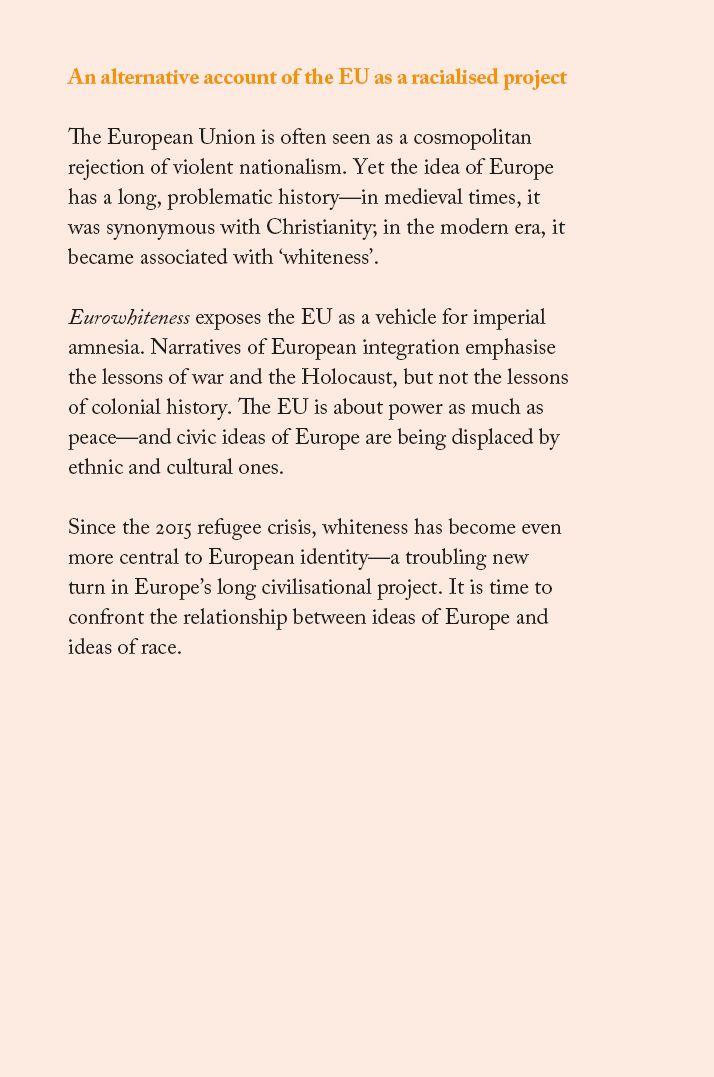HANS KUNDNANI
Eurowhiteness
Culture,EmpireandRace intheEuropeanProject
HURST & COMPANY, LONDON
First published in the United Kingdom in 2023 by C. Hurst & Co. (Publishers) Ltd.,
New Wing, Somerset House, Strand, London, WC2R 1LA
© Hans Kundnani, 2023
All rights reserved.
Distributed in the United States, Canada and Latin America by Oxford University Press, 198 Madison Avenue, New York, NY 10016,United States of America.
The right of Hans Kundnani to be identified as the author of this publication is asserted by him in accordance with the Copyright, Designs and Patents Act, 1988.
A Cataloguing-in-Publication data record for this book is available from the British Library.
ISBN: 9781787389328
This book is printed using paper from registered sustainable and managed sources. www.hurstpublishers.com
CONTENTS
Acknowledgements
Introduction
1.European Regionalism
2.Ideas of Europe
3.From Colonial Project to Community of Memory
4.A New Civilising Mission
5.The Civilisational Turn in the European Project
6.Brexit and Imperial Amnesia
Notes Index
ACKNOWLEDGEMENTS
I began writing this short book while working in the Europe programme at the Royal Institute of International Affairs, better known as Chatham House. I would like to thank my colleagues in the Europe programme, with whom it was an absolute pleasure to work and from whom I learned a huge amount as we analysed European politics from London during the Brexit saga: Pepijn Bergsen, Alice Billon-Galland, Sally Nelson Said, Rudi Obasi-Adams, Tom Raines and Richard Whitman. I could not have asked for a better team with which to work for four years. I would also like to thank my counterparts Lena Khatib, James Nixey and Leslie Vinjamuri for their support during the time that I spent running the Europe programme.
I am grateful to Lola Seaton at the NewStatesmanfor commissioning and editing the essay published in February 2021 from which this book emerged. After the publication of the article, several people kindly invited me to discuss the ideas in it: Fredrick Erixon at the European Centre for International Political Economy; Timothy Garton Ash at St. Antony’s College, Oxford; Corinna Humuza at Kampnagel in Hamburg; and Mareike Kleine at the London School of Economics. Each of these discussions helped me develop the arguments in this book. I would also like to thank Robert Yates, my editor at TheObserver, who allowed me to try out some of the ideas in this book in pieces I wrote for him.
I owe a particular debt to Peo Hansen. His own important work changed the way I thought about the early history of the European project and its relationship with European colonialism, and my conversations with him both encouraged me and helped me develop the ideas in this book. Elements of the arguments in this book were also shaped by discussions I had with Sheri Berman, Chris Bickerton, Gurminder Bhambra, Mehreen Khan, Michael Kimmage, Helen Thompson, Jon Wilson, and Jan Zielonka. I would also like to thank
Anders Stephanson for his encouragement as I began to think about expanding the article in the NewStatesmaninto a book.
Josie Graef and Quinn Slobodian were both of enormous help, in particular in pointing me towards academic literature of which I had been unaware. In addition to those I have already mentioned, a number of other people also read earlier drafts or chapters and gave me helpful feedback: Stefan Auer, Cemil Aydin, Sophia Besch, Megan Brown, Galip Dalay, Oliver Eberl, Noah Gordon, Keith Humphries, Anand Menon, Dirk Moses, Roderick Parkes, Martin Quencez, Meera Sabaratnam, Rachel Tausendfreund and Shahin Vallée. I would also like to thank József Böröcz, from whose work the title of the book is derived.
Finally I would like to thank Michael Dwyer and his team at Hurst—in particular, Anya Hutchison, who edited the text, and Daisy Leitch and Lara Weisweiller-Wu.
INTRODUCTION
This is a rather personal book. It is written from a particular perspective—or, perhaps, from several particular perspectives at the same time. My father was Indian and my mother is Dutch, and I was born and grew up in the United Kingdom. My personal relationship with European identity and with the European Union has therefore been shaped by the influence of an upbringing in a country on the geographical periphery of Europe with a notoriously semi-detached relationship to it and, in addition to my British identity, a secondary sense of belonging to one country that is an EU member state—one of the original Six and to another that is outside Europe and the EU but was colonised by Britain.
This has meant that although I have always felt European to some extent—in fact I may have felt more European than some British people without a parent from another EU member state—I did not feel “100 per cent European” as I have heard some other people proudly describe themselves. While the idea of being European captured part of my identity, it could never capture all of it. In particular, in addition to being European, I also saw myself as being Asian in a sense—not least because that was the usual way of categorising people in the UK with ancestors from the Indian subcontinent. Put simply, I have always had a sense of being partially, but not completely, European.
In 2009, I began working at the European Council on Foreign Relations (ECFR), a European foreign policy think tank with offices in seven European capital cities. At the time, I considered myself a “pro-European”—that is, someone who supports European integration or the “European project” in its current form. I assumed that the EU was a force for good, both internally within Europe and in the world beyond. But as I learned much more about the EU during the six years that I worked at ECFR, I began to feel that much of what I had previously thought I knew about its history was
actually myth—the product of a kind of self-idealisation of the EU. At the same time as my own perceptions of the EU were changing, it was itself changing—especially after the euro crisis began in 2010. I became more critical of the EU and found it harder to continue to identify with it.
This book has emerged from these experiences. In particular, it was my sense that since 2010 there had been a troubling transformation of the EU that led me to write the book, which develops arguments that I have made in a series of shorter articles and papers during the course of the last decade. It was written in the spirit of trying to persuade Europeans that a different Europe is needed than the one we currently have—though since I am a British citizen and the UK has now left the EU, it should perhaps be “they” rather than “we”. It is for the reader to decide if the perspective or perspectives from which I have written this book are clarifying or distorting and whether the experiences that have informed it have enhanced or diminished its analysis of European history and the post-war European project.
Eurowhitenessargues that we should think of the EU as an expression of regionalism, which we should in turn think of as being analogous to nationalism—something like nationalism but on a larger, continental scale. Just as there are different kinds of nationalism, there are different kinds of regionalism. There are different ways of thinking about these differences, but I use the distinction between ethnic/cultural and civic nationalism and apply this to regionalism. “Pro-Europeans” often imagine that the post1945 idea of Europe is purely civic. I argue that it is more complicated: even after 1945, ethnic/cultural elements remained and found expression in the EU. However, I do not deny that there were also civic elements that were centred in particular on the social market economy and the welfare state and the depoliticised mode of governance embodied by the EU.
The influence of these civic elements of European regionalism on the European project and European identity was greatest in the period between the loss of European colonies in the 1960s and the beginning of the euro crisis in 2010. I argue that since then, and especially since the refugee crisis in 2015, this civic regionalism has given way to something much more ethnic/cultural. The deep causes of this shift, I suggest, have to do with the (neo-)liberalisation of the EU, particularly from the creation of the single market onwards, which had the effect of hollowing out the socio-economic idea of what the EU previously stood for. This left a void which was then filled by culture and ultimately produced what I call “the civilisational turn” in the European project.
The book is structured as follows. Chapter 1 discusses the idea of European regionalism. I begin by discussing the idea of a “cosmopolitan Europe” and argue that it mischaracterises the European project. I discuss the conceptual distinction between ethnic/cultural and civic nationalism and argue that we can apply it to regionalism in a similar way, and that we can also think of regions, like nations, as “imagined communities”. I examine the formation of European identity and in particular the way it was defined against various non-European Others. Finally, I argue that thinking in terms of regionalism allows us to identify more clearly the dangers of a “pro-European” appropriation of far-right tropes—what I call “ethnoregionalism”.
In chapter 2, I survey the long, complicated history of ideas of Europe from antiquity to World War II. In particular, I discuss the medieval idea of Europe, which was synonymous with Christianity, and the emergence in the modern period of a rationalist, racialised idea of Europe that was connected to the Enlightenment. Throughout the chapter, I emphasise some of the continuities in these ideas of Europe, in particular around the idea of a civilising mission. I argue that the post-war idea of Europe, centred on what would become the EU, did not represent as clean a break with these earlier ideas of Europe as “pro-Europeans” often imagine it did.
Rather, the EU inherited some of the earlier blind spots in European thought that went back to the Enlightenment.
In chapters 3 to 5, I examine the post-war European project in three phases. Chapter 3 covers the period from 1945 to the end of the Cold War. I examine the initial period of European integration from 1945 to the early 1960s during which it was a colonial project. I show how civilisational thinking persisted after 1945 and informed the European project—in particular through the influence of western European Christian Democrats. I discuss the emergence of a new civic regionalism centred on the social market economy, the welfare state and the depoliticised mode of governance produced by European integration. Finally, I discuss the way in which, even as the Holocaust became a central collective memory in the EU, European colonialism was forgotten.
Chapter 4 covers the two decades from the end of the Cold War to 2010. I show how, during this period, there was an optimistic and perhaps hubristic mood within the EU as it enlarged to include ten new countries. It undertook what can be understood as a renewed civilising mission in central and eastern Europe. But even as the eastern borders of the EU became softer, its southern borders remained hard. Thus, although enlargement increased the diversity of the EU, it paradoxically also reinforced the sense of Europe as an exclusive space—that is, one defined by culture and religion rather than by a purely civic identity. Finally, I discuss the way in which, during this optimistic phase of the European project, the EU was imagined as “civilising” international politics itself.
In chapter 5 I discuss developments in the period from 2010 onwards. I argue that the shock of the euro crisis brought to an end the previous expansive phase of the European project and put the EU into a more defensive mode. In this context, the EU came to think of itself less as a modeland more as a competitor—though whereas some thought of this in economic terms, others thought of it in geopolitical terms, and others still in civilisational terms. As
further crises followed, the EU increasingly saw itself as being surrounded by threats. I argue that, in particular after the refugee crisis, the threats to the EU were perceived in cultural terms as the EU focused on defending what it called the “European Way of Life”. Thus an ethnic/cultural version of European identity—what I call “Eurowhiteness”—seemed to be becoming stronger.
This short book a long essay, really—is not meant to be a history of the EU as such, though from chapters 2 to 5 I proceed chronologically. It does not attempt to exhaustively discuss the factors involved in European integration and is meant to complement the existing literature on the EU rather than to replace it. In particular, it does not discuss in depth the institutional questions and theories of European integration on which many books about the EU focus. It does discuss the evolution of the European institutions, but only to provide context; the main focus is on questions around European collective memory and identity, the imaginary and political borders of Europe, and the evolution of ideas of European civilisation and a European “civilising mission”.
The book has three aims. First, by introducing the concept of regionalism, it offers a different way of thinking about European identity and the EU and their relationship with nationalism. Second, it aims to explore the relationship between ideas of Europe and whiteness—a relationship which, given the obvious connections between the terms “European” and “white”, has received surprisingly little attention. Third, it offers an interpretation of the evolution of the EU, especially during the last decade or so since the beginning of the euro crisis in 2010. In each of these cases, the book does not aim to give definitive answers—which a book of this length could not possibly do—but rather to stimulate debate.
Neither does the book offer any solutions to the complex institutional problems the EU faces and on which many discussions of the future of the EU focus. However, it does make an argument about the structural connection between the (neo-)liberalisation of the EU and
the salience of cultural issues in European politics. As economic policy has been depoliticised within the EU, political contestation has shifted to issues around identity, immigration and Islam. Any solution to the EU’s problems must therefore go beyond the usual onedimensional debates about “more” or “less” Europe—that is, integration or disintegration—and focus instead on how democracy can be deepened within the EU. This, I would suggest, must in turn involve a repoliticisation of economic policy in order to reverse what I call “the civilisational turn” in the European project and to move back towards a more civic regionalism.1
However, these questions are for citizens of member states of the EU. As a British citizen, I instead end the book with some reflections on what my analysis of the EU tells us about how we should understand Brexit and the future of the UK. If it was the series of crises that the EU faced from 2010 onwards, and the transformation of the EU to which they led, that prompted the analysis in the earlier chapters of the book, the analysis in chapter 6 was prompted by the debate about Brexit following the vote by the British people to leave the EU in June 2016. Brexit—and in particular the idea of “Global Britain” which some of its advocates promoted—was seen by many in both Britain and the rest of Europe as an expression of a neocolonial aspiration. This seemed to me to be too simple.
In particular, this simplistic interpretation of Brexit seemed to me to be a function of a disconnect between debates about Europe and debates about empire and race. In the UK, there had for decades been extensive debates about empire and race, which had explored in depth the afterlives of colonialism and its implications for race relations in the UK.2 But although these debates were more developed than in other European countries, they were somewhat disconnected both from the story of the UK’s post-war Europeanisation and from the parallel stories of empire and race in other western European countries. Conversely, debates about Europe, both in Britain and on the continent, seemed to be disconnected from issues around empire and race.
I was well aware of the history and ongoing reality of racism in Britain—not least because my first job after leaving university in the mid-1990s was at the Commission for Racial Equality, a British quango which enforced laws on racial discrimination and sought to promote racial equality in the UK.3 But it had always seemed to me that the UK was far ahead of other European countries in terms of addressing racism. Yet in the aftermath of the Brexit vote, the UK suddenly seemed to be seen by many as the most racist country in Europe in a way that puzzled me. In reality, the relationship between Brexit and race seemed to me to be much more complicated. In particular, it was clear that Britain’s ethnic minority population identified even less with Europe than its white population did.
This in turn seemed to be linked to the way in which, since the 1960s, British immigration policy had made it harder for people from Britain’s former colonies to settle in the UK while making it easier for people from Europe to do so. As someone with one parent from a Commonwealth country and the other from an EU member state, this was again quite personal for me. When my parents both arrived in the UK in the 1960s, my father was in some ways less of an outsider than my mother was—for example he was able to vote whereas she was not. But during my lifetime, this has changed as non-white Commonwealth citizens have been reimagined as immigrants and the rights of Europeans have been expanded as the UK became part of the “European community”.
My argument about the UK in chapter 6 follows from the analysis of the evolution of the EU and in particular of the evolution of the EU as a “community of memory” in chapter 3. In that chapter, I argue that by the end of the Cold War, the EU had become a vehicle for imperial amnesia. If that is correct, it provides a way to think in a different way about the meaning of Brexit—or at least to be able to imagine different versions of it. In particular, I argue that leaving the EU can be an opportunity for the UK to deepen both its engagement with its colonial past and its relationships with its former colonies.
Although in the referendum in 2016 I voted to remain in the EU, I argue that Brexit is a chance for the UK to become less Eurocentric.
As with the argument that I make about the EU in the earlier chapters of the book, the argument about the UK in chapter 6 is not meant to be either definitive or exhaustive. I do not discuss any of the complex institutional questions around the relationship between the EU and the UK or any of the economic and security implications of Brexit on which much discussion has focused during the seven years since the referendum. Rather, I focus on what seems to me to be a misunderstood aspect of Brexit—that is, the role of questions of empire and race within it—in order to add further complexity to what is already a very complex story. In doing so, I aim to offer alternative ways to think about possible futures for the UK outside the EU—particularly for the British left.
EUROPEAN REGIONALISM
Many “pro-Europeans”—that is, supporters of European integration or the “European project” in its current form—imagine that the European Union is an expression of cosmopolitanism. They think it stands for diversity, inclusion and openness. It opposes nationalism and racism. It is about people “coming together” and peacefully cooperating. It is a shining example of how enemies can become partners and how diversity can be reconciled with unity. As the European Commission president José Manuel Barroso put it when the EU was awarded the Nobel Peace Prize in 2012, the European project has shown “that it is possible for peoples and nations to come together across borders” and “that it is possible to overcome the differences between ‘them’ and ‘us’.”1
However, there is something rather Eurocentric in thinking of the EU in this way. In particular, by generalising about “peoples and nations” in the way Barroso does, it mistakes Europe for the world. After all, in so far as the European project—that is, the process of European integration since the end of World War II—has brought people and nations together, it is of course only peoples and nations within Europe. It was a process that began with six western European countries in the immediate post-war period and subsequently “widened” to include other northern, western and southern European countries and, after the end of the Cold War, central and eastern European countries—but has never included the rest of the world, though of course the EU has developed policies towards it.
Since Europe is not the world, European integration is not global integration—that is, integration and openness within Europe does not mean integration with and openness to the rest of the world, though “pro-Europeans” often imply that it does. The EU’s “four freedoms”—that is, free movement of capital, goods, people and
services—only apply within Europe. Although internal barriers to the free movement of capital, goods and people have been progressively removed during the last seventy-five years, external barriers have persisted. In particular, while many barriers to flows of capital and goods from outside the EU have been removed (though the Common Agricultural Policy limited agricultural imports from outside the EU), barriers to the movement of people have remained.
My argument in this chapter is that this tendency to mistake Europe for the world—what might be called “the Eurocentric fallacy”—has obscured our understanding of the EU and its role in the world. In particular, it has led to an idealisation of European integration as a kind of cosmopolitan project: what I call “the myth of cosmopolitan Europe”. I argue that a better way to understand the EU is as an expression of regionalism, which is analogous to nationalism rather than the opposite of it as many “pro-Europeans” imagine it to be. Thinking of the EU in terms of regionalism rather than cosmopolitanism allows us to understand more clearly the tensions within the European project—especially between ethnic/cultural and civic ideas of Europe—and recent developments in the EU.
ThemythofcosmopolitanEurope
Although the EU is not a global project as such, some European thinkers such as Jürgen Habermas have argued that it can nevertheless be understood as a cosmopolitan project. Habermas argues that globalisation led to a “de-bordering of economy, society and culture” and ended a historical constellation which was based on the “territorial principle” and centred on the nation state—and in doing so hollowed out democracy.2 The EU is, or at least ought to be, a way to regain the ability to regulate markets and pursue redistributive policies now that, in the context of what Habermas calls the “post-national constellation”, the nation state is no longer able to do so. But the idea of a “cosmopolitan Europe” suggests that rather than “re-bordering” and re-establishing the “territorial principle” at a higher level, the EU might transcend it.
Influenced by Kant’s writings on cosmopolitanism, Habermas argues that the EU can function as a kind of basis for, or step towards, the transformation of international politics into domestic politics—in other words, a precursor to a world society.3 Many “pro-Europeans” believe that European integration has already transformed international politics withinEurope into domestic politics. Yet the idea of a “cosmopolitan Europe” goes further, seeing a European federal republic as a “starting point for the creation of a regime of a future Weltinnenpolitik(‘world domestic politics’) based on international treaties”.4 Elsewhere, Habermas writes that the EU is “an important stage along the route towards a “politically constituted world society”.5 Thus the EU can “re-embed” liberalism not just on behalf of Europeans but for the whole of humanity with the “cosmopolitan goal of creating the conditions necessary for a global domestic policy”.6
Habermas was making these arguments at a moment of optimism among “pro-Europeans”, who, in the context of the transformation of Europe after the end of the Cold War and the enlargement of the EU to include central and eastern European countries, began to believe that the whole world could be remade in the image of the EU—a moment I examine in more depth in chapter 4. At the time of writing, however, this seems much less plausible. For example, in the first two decades after the end of the Cold War, it was still possible to believe that the removal of borders within the EU was a precursor to a borderless world. But during the last decade, and especially since the refugee crisis in 2015, the EU has come to see a hard external border as the necessary corollary of the removal of internal borders.
Another influential theorist of the idea of “cosmopolitan Europe” is the sociologist Ulrich Beck. As in Habermas’s writing on cosmopolitan Europe, there is an ambiguity about whether it is the real existing EU or a possible future EU that Beck sees as “cosmopolitan”. Beck says that his vision of cosmopolitan Europe is based on “the ideals and
principles for which Europe in essence always stood and stands” and that the “European process of integration involved a cosmopolitan momentumfrom the beginning”.7 But although the EU “institutionalised” this idea of cosmopolitanism, it has been “deformed” by nationalism and there is therefore a need to “rethink Europe”.8 Yet he emphasises that this does not mean “reinventing Europe or reconstructing Europe” but rather going further with European integration and “completing the incomplete European project”.9
Whereas Habermas’s idea of cosmopolitan Europe is based on the optimistic idea that the EU could be a precursor of “world domestic politics”, Beck sees the EU as a cosmopolitan project because it recognises difference in a non-hierarchical way.10 A cosmopolitan Europe is thus “a Europeofdifference, of accepted and recognized difference” (emphases in original).11 However, it is only difference withinEurope that the EU recognises in this way—in other words, Beck mistakes Europe for the world. This leads him to idealise the EU, claiming for example that “radical openness is a defining feature of the European project”.12 The “cosmopolitanism” of the EU seems to consist simply in its rejection of what he calls the “national selfdelusion”—in other words, it is little more than a synonym for antior post-nationalism.13
It is possible to argue that while the EU is not inherently or structurally a cosmopolitan project, it does nevertheless have objectives or policies that can be understood as cosmopolitan. Some observers point, for example, to European approaches to development aid or the rejection by Europeans of the death penalty.14 Another version of this argument centres on policies aimed at producing redistributive justice on a global level. But it is not clear how such objectives and policies differentiate the EU from nation states, either within Europe or beyond it, which can and do also have cosmopolitan objectives or policies in the same sense.15 Indeed, some of the policies that are seen as examples of the EU’s
cosmopolitanism, such as development aid, are policies of EU member states as much as the EU itself.
Another reason why some see the EU as cosmopolitan is the set of universal values on which it is supposed to be based. Thus some “pro-Europeans” suggest that what makes the EU a distinctively cosmopolitan project is not so much its globalism as its universalism. In this respect, however, it is again difficult to see how this differentiates the EU from many nation states, particularly France and the United States, which also understand themselves as being based on universal values and can therefore reconcile cosmopolitanism with nationalism. Thus, in seeing Europe as an expression of cosmopolitanism—however this is defined—“proEuropeans” exaggerate the contrast between the EU and nation states and, in doing so, idealise the European project as if it stood for the opposite of nationalism.
Civicandethnic/culturalregionalism
Instead of thinking of the EU as an expression of cosmopolitanism, it is more accurate and helpful to think of it as an expression of regionalism.16 Regionalism is not the opposite of nationalism, as many “pro-Europeans” think of it, but rather is analogousto it—in other words, similar to nationalism but on a larger, continental scale.17 That European identity is closer to national identities than to the idea of cosmopolitanism can be seen clearly by thinking about what it means to say “I am European”. When you do so, you are not saying that you are a citizen of the world—let alone a “citizen of nowhere”, as British prime minister Theresa May implied in a speech at the Conservative Party conference in 2016. Rather, you are saying that you are a citizen of a particular region—and one that has a particular history and relationship with the rest of the world.
Thus, although “pro-Europeans” tend to think of European identity as being inclusive, it is in another sense exclusive. It is internally inclusive; it is able to include multiple European national identities
and in that sense becomes more inclusive than they are. This is why people whose families cross national boundaries within Europe— whether they have lived in multiple European countries, have parents from multiple European countries, or have a partner who is from another European country—are often most attracted to the idea of thinking of themselves as being European. At the same time, however, European identity is externally exclusive—that is, it excludes those who are not European or cannot think of themselves as being European.
Thinking of European identity as a kind of regionalism allows us to think more clearly about its different versions through history. In particular, it allows us to make a conceptual distinction between civic regionalism and ethnic/cultural regionalism analogous to the distinction between civic nationalism and ethnic nationalism originally made by Hans Kohn in an influential early study of nationalism.18 Kohn understood civic nationalism as an inclusive nationalism based on the voluntary commitment of a group of people to liberal principles as the basis for a shared sense of citizenship—in other words a political community that, at least in theory, anyone could join. Ethnic nationalism, on the other hand, was a more exclusive form of nationalism based on a shared ethnicity, language or religion.
One concrete expression of nationalism is the kind of citizenship that embodies it. Civic nationalism is generally associated with the idea of citizenship by birth: jussoli. Ethnic nationalism, meanwhile, is generally associated with the idea of citizenship by blood: jus sanguinis. Jussoliis generally to be found in settler societies such as the United States and other states in the Americas, while jus sanguinistends to be the norm elsewhere in the world, including in Europe. (Most European countries have now converged on a model that mixes the two forms of citizenship. For example, German citizenship was traditionally based on jussanguinisbut was reformed in 2000 to include elements of jussoli. Conversely, British citizenship
law was traditionally based on jussolibut was reformed in 1981 to include elements of jussanguinis.)
Kohn associated civic nationalism with “Western” forms of nationalism and ethnic nationalism, which he saw as opposed to “liberal” nationalism, with “Eastern” forms of nationalism.19 Kohn traces the origins of the “liberal” or Western form of nationalism from ancient Greek and Jewish thought, through the Glorious Revolution in sixteenth-century England, to the American and French revolutions, which produced the purest forms of civic nationalism. The illiberal form of nationalism that Kohn calls “organic” (that is, it understands the nation as being natural rather than willed) emerged as a response to this liberal nationalism. The paradigmatic case is the romantic version of German nationalism that emerged in opposition to French occupation during the Napoleonic era and culminated in Nazism.
In reality, however, American, British, French and German nationalisms all have both civic and ethnic/cultural elements. All forms of nationalism are to some extent exclusive; they cannot be open to the entire population of the world. Often, the differences between them are less about the degree to which they exclude others and more about whom exactly they exclude and on what basis—they can be inclusive towards some and exclusive towards others. Moreover, almost all forms of nationalism, even those that are seen as paradigmatic examples of civic nationalism, define themselves at least to some extent in ethnic/cultural terms. Thus, civic and ethnic/cultural forms of nationalism should be understood as ideal types rather than descriptions of particular national cases.
A good example of this complexity is American nationalism, which Kohn idealises as an “almost purely civic nationalism”.20 The principle of birthright citizenship, which is en-shrined in the Constitution, sets the United States apart from European countries that generally made access to citizenship dependent on ethnicity, culture or religion. However, birthright citizenship was only included in the
Constitution through the Fourteenth Amendment as part of what Eric Foner calls the “second founding” of the United States after the end of the American Civil War—and though it was “a dramatic repudiation of the powerful tradition of equating citizenship with whiteness”, it still did not guarantee full citizenship rights for AfricanAmericans, who were not able to vote in the South until the mid1960s.21 In other words, Kohn ignores the ethnic/cultural elements of American nationalism.
Nonetheless, if one puts aside Kohn’s association of civic nationalism with the West and ethnic nationalism with the East, it remains a helpful conceptual distinction. It is particularly helpful in understanding European nationalisms more precisely. But rather than thinking in terms of specific national identities as being either straightforwardly civic or straightforwardly ethnic/cultural, it is more useful to think of each nationalism as having intertwined civic and ethnic/cultural elements, albeit in varying proportions, as Craig Calhoun puts it.22 Therefore, instead of locating individual nationalisms as being on one side or the other of Kohn’s dichotomy, it is more useful to study the tensions between the two sides in each case.23
We can also take a similar approach to European regionalism. In the long, complex history of the idea of Europe, it has had both civic and ethnic/cultural elements, as I will show in the remaining chapters of this book. Like national identities in Europe, modern European identity emerged out of the Enlightenment, producing a racialised, rationalist identity which included both ethnic/cultural and civic elements. After World War II, a new, more civic identity emerged, at least among elites, that was centred on what was to become the EU. But as these elites sought to give the European project legitimacy and pathos, they constantly drew on the earlier, more ethnic/cultural version of identity and even now, both civic and ethnic/cultural versions of European regionalism are elided.
Europeasanimaginedcommunity
Another influential way of understanding nations, based on the work of Benedict Anderson, is as “imagined communities”.24 Nationalism functions to make nations seem “natural”—that is, as if they had always existed—but in reality they are socially constructed. Anderson argues that nationalism emerged—first in the creole societies of the Americas (that is, Brazil, the United States and the former colonies of Spain) and then in Europe—in the context of modernity and the Enlightenment. From the seventeenth century onwards, as religious certainties dissipated, monarchs lost the automatic legitimacy they had previously had, and conceptions of time changed, there was a need for a new sense of belonging to replace sacred imagined communities—that is, in the case of Europe, to replace the “imagined community of Christendom”.25
For Anderson, the decisive factor in the emergence of nationalism was what he calls “print capitalism”—that is, the mass production and commodification of books and newspapers made possible by the printing press—which “made it possible for rapidly growing numbers of people to think about themselves, and to relate themselves to others, in profoundly new ways”.26 In particular, as the market for readers of books in Latin—which had been the lingua franca of Europe’s religious elites—was quickly saturated, publishers began producing books in vernacular “national print languages”, which in turn had the effect of standardising these languages. This enabled the nation to play the role of earlier religious identities in transforming contingency into meaning. “It is the magic of nations to turn chance into destiny,” Anderson writes.27
Europe can also be understood as an “imagined community”.28 Anderson himself says that “all communities larger than primordial villages of face-to-face contact (and perhaps even these) are imagined”.29 But we can perhaps go even further. If “imagined communities” are in this sense a function of size, Europe as a region may in a sense be even more imagined than European nations. Of course, there are countries like China and India that have larger
population terms than Europe as a whole, but at least compared to European nations, European regionalism is, as it were, one further step removed from a local identity. We can thus think of European regionalism as being imagined—or to put it another way, mediated to an even greater extent than individual national identities in Europe.
In another sense, however, Europe may be a slightly different kind of imagined community than nations. Anderson specifies that a nation is an imagined political community that is “imagined as both inherently limited and sovereign”.30 He writes:
The nation is imagined as limitedbecause even the largest of them, encompassing perhaps a billion living human beings, has finite, if elastic boundaries, beyond which lie other nations. No nation imagines itself coterminous with mankind. The most messianic nationalists do not dream of a day when all members of the human race will join their nation in the way it was possible, in certain epochs, for, say, Christians to dream of a wholly Christian planet.”31
Europe, on the other hand, is ambiguous about its limits in a different way than nations are. It is not only that it, too, has elastic boundaries in the same way as nations do (for example, there has always been an ambiguity about where Europe ends and Asia begins) but also that it imagines itself in a different way than nations —especially around the question of whether its boundaries are finite.32
As I have already mentioned, “pro-Europeans” have sometimes seen the EU as an expansive community that would remake the world in its own image—especially in the two decades after the end of the Cold War, as I will discuss in chapter 3. In other words, European regionalism has something of the messianic aspirations that Anderson ascribes to earlier religious identities—which may in turn have to do with the way that European identity was originally largely synonymous with Christianity, as I will discuss in chapter 2. But in
recent years, the EU has become clearer about its limits. In doing so, “pro-European” thinking on sovereignty is also changing. “ProEuropeans” had traditionally rejected the idea of sovereignty as anachronistic and saw European integration as a way to overcome it. But during the last decade, they have embraced the idea of “European sovereignty”, as I will discuss in chapter 5. In other words, European regionalism may be becoming morelike nationalism than it was previously.
At the beginning of the post-war project of European integration, some clearly saw the possibility that a European identity could be analogous to nationalism—and even replicate its worst features.
Hannah Arendt, for example, was supportive of European integration, but writing in 1948 in the context of the emerging Cold War rivalry between the United States and the Soviet Union, and at a time when there was much discussion of a European federation, she observed:
The trouble with many European intellectuals in this respect is that now the long-wished-for European federation is a definite possibility, new constellations of world powers make it only too easy to apply their former nationalism to a larger structure and become as narrowly and chauvinistically European as they were formerly German, Italian, or French.33
In other words, Arendt foresaw the possibility of an ethnic or cultural version of identity centred on a united Europe.
Few “pro-Europeans” today, on the other hand, see European identity as being analogous to nationalism in this way.34 This in turn has to do with the way in which, as the corollary of idealising European identity, they have tended to demonise national identity in general rather than distinguishing between ethnic/cultural and civic versions of it. Benedict Anderson describes how common it is for “progressive, cosmopolitan intellectuals (particularly in Europe?) to insist on the near-pathological character of nationalism, its roots in
fear and hatred of the Other, and its affinities with racism”.35 The tendency to view nationalism in this way is particularly strong among “pro-Europeans”. At best, they see it as an anachronism. At worst, they see it as a dangerous force. As French president François Mitterrand put it in his last speech to the European Parliament in 1995: “Nationalism is war.”36
However, there is also something Eurocentric about viewing nationalism in this way. It is difficult to square the idea of nationalism as a “dark, elemental, unpredictable force of primordial nature, threatening the orderly calm of civilized life”, as Partha Chatterjee puts it, with the experience of anti-colonial nationalism such as that in India at the time of its independence struggle.37 Seeing nationalism in purely negative terms obscures what Chatterjee calls its “emancipatory aspects”.38 By exaggerating the differences between nationalism and regionalism, Europeans—and especially Germans, who tend to see the history of the nation state through the prism of their own experience with it—have also created a blind spot around the possibility that European regionalism could resemble European nationalisms.
A good example of this blind spot is the way in which the EU responded to the COVID-19 pandemic in 2020. At the beginning of March, as the virus swept through Europe, with Italy hit particularly badly, France and Germany imposed restrictions on the export of personal protective equipment (PPE). This was generally seen by “pro-Europeans” as dangerous nationalism.39 A week later, when these restrictions were lifted and the EU itself restricted the export of PPE beyond Europe, it was seen as a triumph of European unity.40 “We need to help each other,” European Commission president Ursula von der Leyen said.41 But there seemed to be little awareness among “pro-Europeans” that the EU had done precisely what they had criticised member states for, except at a regional level—and with potentially even worse consequences for the world.
